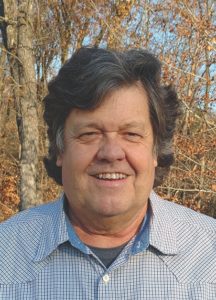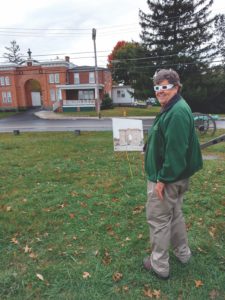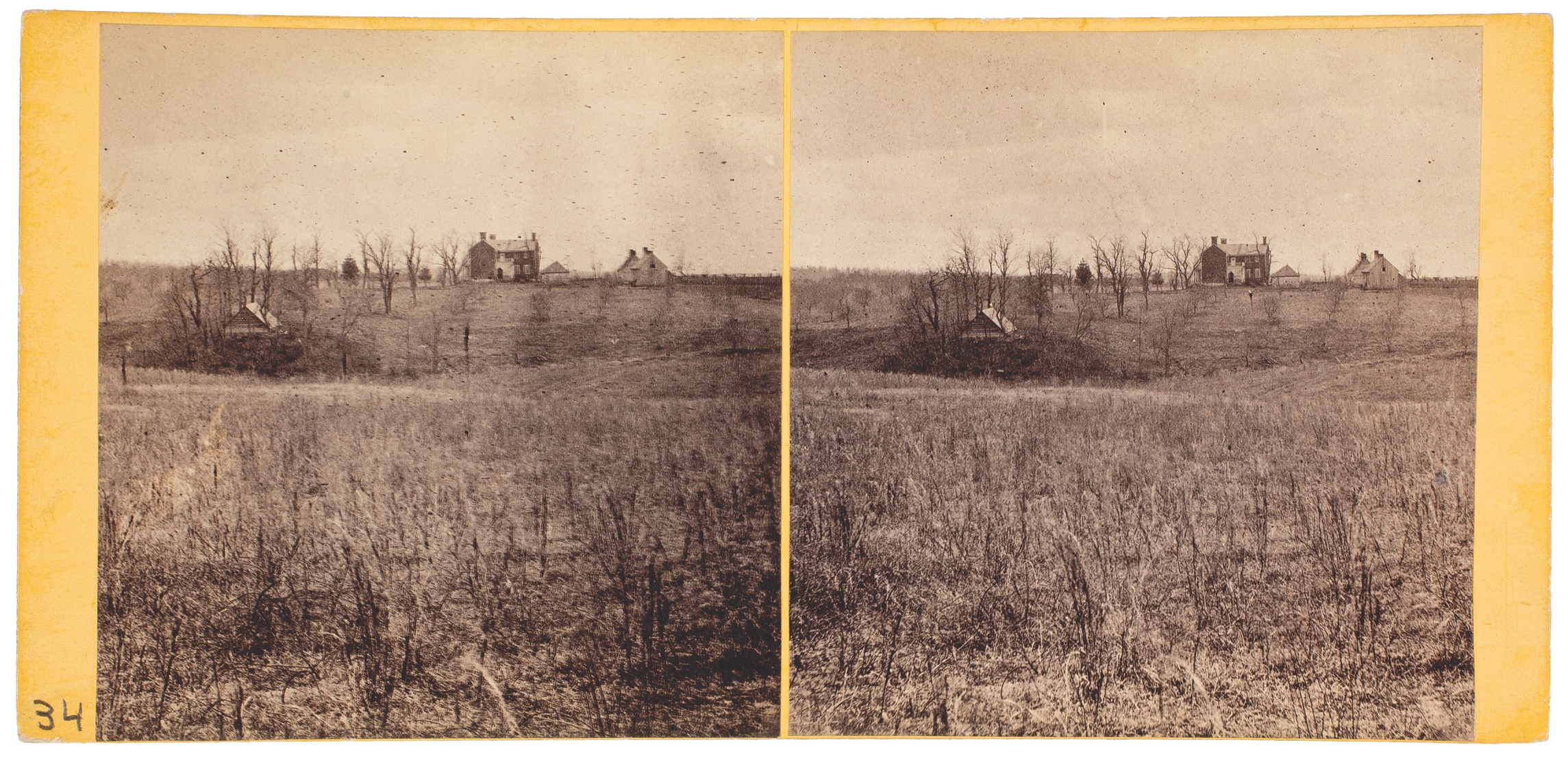On October 28, 1980, Bob Zeller saw his first Civil War stereoview, a photograph of Antietam’s Bloody Lane by photographer Alexander Gardner. Since the age of 13, Zeller had been a hobbyist collector of the 19th-century double image photographs meant to be seen in a viewer that blended the two side-by-side images into one so that they popped into 3-D. But this one was different. “It absolutely blew me away,” Zeller says. “I didn’t know that Civil War photographs had also been taken in stereo.” His hobby became a passion, which soon became a career devoted to the study and preservation of documentary Civil War photographs—“windows into history,” he calls them. In 2001, through a collaboration with fellow Civil War photography enthusiasts, Zeller co-founded the Center for Civil War Photography to pursue those same missions.
What was the genesis for the Center for Civil War Photography?
In 1999, I was sitting around with the Gettysburg tintype photographer Rob Gibson and Confederate reenactor Al Benson and we started talking about, “Wouldn’t it be cool to have a center or place devoted to Civil War photography?” In 2001, I met Garry Adelman, who was coming into the field at that time and was studying William Frassanito and his books about Civil War photographs. Chuck Morrongiello, another Civil War photo enthusiast and brilliant guitarist, Garry, Rob, Al, and myself are all co-founders of the organization. Garry said, “Hey, I can put on a seminar every year.” Chuck provided the money to get incorporated. Our first seminar was in Gettysburg in 2001. I was elected president when we started and Garry, vice president. We’ve always been small, 150–200 members. In 2003, we published our first issue of Battlefield Photographer, which was considered to be our newsletter. At the outset we had an idea to open a museum, but we decided that we could do our best work as a virtual organization, with an annual seminar, a publication, a membership organization, and a good website. I think it has totally worked.

Tell us more about Battlefield Photographer.
From the beginning, the magazine has served a greater purpose than just being a newsletter. It doesn’t just focus on stuff the CCWP is doing, it focuses on historical articles. In nearly every issue of Battlefield Photographer, we publish a Civil War photo that has never previously been published on the printed page. The discovery of Civil War photographs is still happening on a regular basis. My biggest role at the center, in addition to running the organization, is being the editor of Battlefield Photographer. I’m a former newspaper journalist. We publish three times a year. If you’re not familiar with Battlefield Photographer, you’re not on the cutting edge of what’s the latest in the documentary photographs of the Civil War. It’s the discovery aspect of Civil War photography that excites me and keeps the passions burning for all of the volunteer work I do. There’s a group of folks who got their first articles published in Battlefield Photographer. They are sort of amateur photo historians who are making these discoveries and advancing the field and this has been a place for them to get their work published. That’s the exciting thing to me. A lot of discovery is happening because some organizations are just now digitizing and putting their collections online. When the American Antiquarian Society put their stereoviews online, it included a group of 1866 stereoviews and a dozen stereo views that nobody was familiar with. One of our members, Keith Brady, saw them first and let me know. I sent a note down to historians John Hennessy and Eric Mink at the Fredericksburg & Spotsylvania National Military Park, because one of the images was Ellwood Manor. The National Park service had been trying since the 1980s to figure out where the slave cabins had been on the property. They conducted radar studies and hadn’t succeeded. Eric Mink happened to be having a meeting that very day with one of the contractors who was going to be doing a new round of radar scans to see if there was any evidence of the foundations or footing for the cabins. He got my e-mail and one of the photographs showed the mansion and two slave cabins next to it. So, that’s where they were! That was a spectacular discovery.
What are some of the projects on which the CCWP has worked?
We’re an educational organization, but one of our missions is preservation. And the most applicable is preserving digital copies of the photographs. The Library of Congress doesn’t really have the funds to scan everything that they have. They have an enormous number of negatives and photographs. Along with the National Archives, they are the main repository for the original glass-plate negatives of these documentary photographs by Civil War–era photographers such as Alexander Gardner, Mathew Brady, and others. All of them at the Library of Congress have now been scanned at high resolution. The Library of Congress also has prints, made from the glass negatives. In some cases, the collection of prints has not been put online because they haven’t had the funding to do so. We’ve provided the funding to scan several collections that otherwise would not have been scanned, including 17 scenes of Richmond in April 1865 by the photographers Levy and Cohen; 23 photographs by Vermont photographer [George] Houghton; and 47 Brady album gallery cards.

How do you think technology has impacted or advanced the study of these photographs?
The advent of high-resolution digital scanning has been huge. The photographic negative back then was done on a glass plate. So in the years before digital photography, the common photograph you would get was from 35mm film, these glass plates are 4 inches by 5 inches for a half stereo and for individual images they are 7 inches by 9 inches. So you can get incredible detail. When you make a high-resolution scan of those, you can download the scan and take these journeys to the depths of the photographs. And that’s an area of discovery that’s just as active and exciting as finding new photographs—finding details within them. There have been controversies because of the exploration into these plates, such as “Where is Abraham Lincoln in the photograph of the Gettysburg Address ceremony scene?” I was involved with the discovery of the first Lincoln, and I will argue to the very end which one I believe is Lincoln, but another one in the crowd has also been identified as Lincoln. Controversies erupt because of the ability to look at these photographs in such detail and fully explore the contents. Bill Frassanito, with his Gettysburg book, A Journey in Time, in 1975, really pioneered this use of documentary photographs for the historical information they contained.
The CCWP Image of War Seminar is in its 20th year. What does the seminar offer?
It’s not just about photos. If you come to the seminar, you will hear about the battle on the battlefields. The unique aspect about our Civil War conference is its focus on the photographs that were taken. We have always specialized in showing the 3-D photographs of the Civil War or photographs in 3-D at the locations they were taken. We have poster-sized anaglyphs of the photographs that were taken and we stick them in the ground right where the camera position was. We provide 3-D glasses and people can see the original photograph in 3-D at the spot it was taken. Garry Adelman likes to call it a 4-D experience, adding the element of actually being there where the photograph was taken. We always have a 3-D presentation, so it’s focused on the photography, but you’re also going to find out about the battle as you would in any Civil War or battlefield tour. It’s not just for photographers. It’s for everyone.





